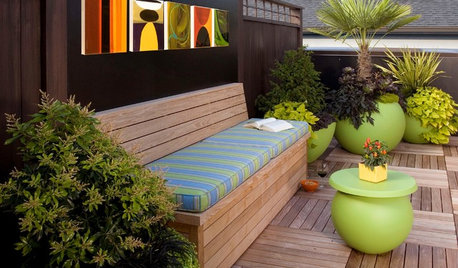Winter Care for Carnivours
claritamaria
16 years ago
Related Stories

LIFESimple Pleasures: A Long Winter’s Nap
This time of year we can always use a little extra rest. Make it easy with these ideas for daytime napping
Full Story
SHOP HOUZZShop Houzz: Store Winter Clothes and Gear
Pack and store your winter wardrobe with care, so it will be in good shape for next year
Full Story0

HOUSEKEEPINGOutdoor Home Prep to Do Before Hard Winter Hits
Avoid cracking, rusting and rotting during freezes by taking care of these tasks now
Full Story
GARDENING GUIDESSpring Citrus Care Reaps Months of Sweet Rewards
Learn how to tend citrus trees in spring and ways to preserve their delicious fruit
Full Story
OUTDOOR ACCESSORIESCare Guide: How to Clean Your Patio Cushions
Ready your furniture for spring and summer with these tips for removing sunscreen stains, mildew and more
Full Story
GREEN BUILDINGThe Passive House: What It Is and Why You Should Care
If you don’t understand passive design, you could be throwing money out the window
Full Story
LIGHTINGHouse Hunting? Look Carefully at the Light
Consider windows, skylights and the sun in any potential home, lest you end up facing down the dark
Full Story
GARDENING GUIDESBackyard Birds: How to Care for American Goldfinches
The American goldfinch is a bright-in-the-summer visitor and one of the only vegetarian songbirds. Here's how to give them a healthy habitat
Full Story
COMMUNITYWant a Cleaner, Safer Neighborhood? Show You Care
Our behavior strongly influences others, says a new study. Show neighbors you care about your street and watch them follow suit
Full Story
EXTERIORSCare and Training for a Vine-Covered Home
Love the look but don’t want the ruin? Learn how to have vine-draped walls without all the cracks and crumbling
Full StorySponsored






carnivorousplants
tommyr_gw Zone 6
Related Professionals
Hartford Landscape Contractors · Maple Valley Landscape Contractors · Ashburn Landscape Contractors · Bound Brook Landscape Contractors · East Lake-Orient Park Landscape Contractors · Firestone Landscape Contractors · Fort Payne Landscape Contractors · Manhattan Landscape Contractors · Mason Landscape Contractors · Mount Kisco Landscape Contractors · Ocoee Landscape Contractors · Dent Stone, Pavers & Concrete · Denton Swimming Pool Builders · Orangevale Swimming Pool Builders · West Covina Swimming Pool Builderspetiolaris
mutant_hybrid
claritamariaOriginal Author
petiolaris
tommyr_gw Zone 6
claritamariaOriginal Author
bob123how
mutant_hybrid